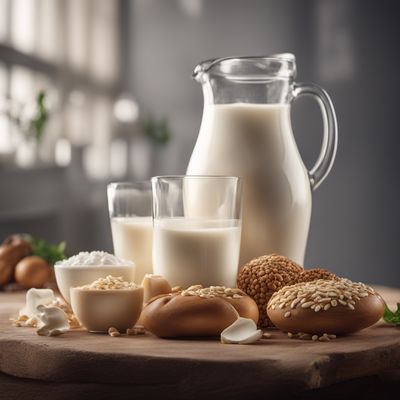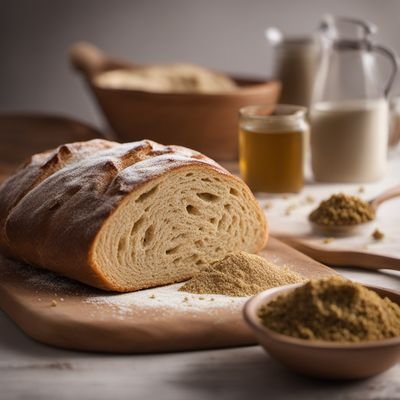
Ingredient
Bactrian camel milk
"The Golden Elixir: Unveiling the Richness of Bactrian Camel Milk"
Bactrian camel milk is a creamy and slightly sweet liquid with a rich, golden color. It has a smooth and velvety texture, similar to cow's milk but with a slightly thicker consistency. The milk is known for its high fat and protein content, making it a nourishing and wholesome choice. Its unique composition also includes essential vitamins and minerals, such as vitamin C, iron, and calcium. Bactrian camel milk is often sought after for its potential health benefits, including boosting the immune system, aiding digestion, and promoting overall well-being.
Origins and history
Bactrian camel milk has a long history dating back thousands of years, originating in the arid regions of Central Asia, particularly Mongolia, China, and Kazakhstan. It has been an integral part of the nomadic cultures in these regions, providing sustenance and hydration in harsh environments. The milk's cultural significance is deeply rooted in the traditions and lifestyle of the nomadic communities, where camels are revered for their ability to survive in extreme conditions and provide valuable resources.
Nutritional information
Bactrian camel milk is a nutritional powerhouse, containing high levels of protein, healthy fats, vitamins, and minerals. It is rich in calcium, which supports bone health, and vitamin C, which boosts the immune system. Additionally, it is lower in lactose compared to cow's milk, making it a potential alternative for individuals with lactose intolerance.
Allergens
Bactrian camel milk may pose a risk for individuals with dairy allergies or lactose intolerance.
How to select
When selecting Bactrian camel milk, look for a reputable source that ensures the milk is obtained from healthy camels raised in clean and hygienic conditions. Opt for milk that is fresh, pasteurized, and free from any off-putting odors or flavors.
Storage recommendations
Bactrian camel milk should be stored in a refrigerator at temperatures below 40°F (4°C) to maintain its freshness and quality. It is best consumed within a few days of purchase.
How to produce
Producing Bactrian camel milk requires specialized knowledge and resources, making it challenging for amateurs to produce on their own. It involves raising and caring for Bactrian camels in suitable environments, ensuring their proper nutrition and well-being, and employing proper milking techniques.
Preparation tips
Bactrian camel milk can be consumed as a standalone beverage, used in cooking and baking, or added to smoothies and shakes. It can be heated for hot beverages or used as a substitute for cow's milk in various recipes. When using it in recipes, keep in mind that its slightly thicker consistency may require adjustments in cooking times or quantities.
Culinary uses
Bactrian camel milk is commonly used in traditional Central Asian cuisines, where it is enjoyed as a refreshing drink, used to make yogurt, or incorporated into desserts and sweets. It can also be used as a substitute for cow's milk in various recipes, adding a unique flavor and richness to dishes.
Availability
Bactrian camel milk is primarily available in regions where Bactrian camels are raised, such as Mongolia, China, and Kazakhstan. It may also be found in specialty stores or online retailers catering to international ingredients.



